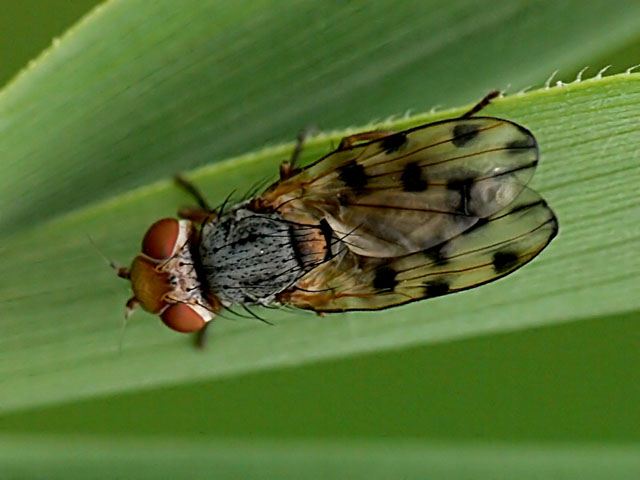Tephritidae

Tephritidae is one of two fly families referred to as "fruit flies". They are a large family with about 5,000 described species in nearly 500 genera. They are mostly small flies typically 2–10 mm long. Many of the species have brightly patterned wings with spots, bands, or stripes, and some species mimic wasps in colouration and behavior, which is a form of protective mimicry. Members of this family often hold wings in a characteristic “V” shape while resting. Tephritidae are found worldwide, but they are especially diverse in tropical and subtropical regions. The adults often feed on nectar, honeydew, or plant exudates. The eggs are inserted by females into plant tissues with a sharp ovipositor, and the larvae typically develop in plant tissues, especially fruits, seeds, stems, or flowers, and the pupae usually develop in soil or the plant material. The adults emerge to mate, often showing complex courtship behaviors, including wing displays and pheromone release. Many Tephritidae are serious agricultural pests, damaging fruit and vegetable crops (e.g., Mediterranean fruit fly Ceratitis capitata, melon fly Zeugodacus cucurbitae). However, some species are used as biological control agents, to suppress invasive weeds by feeding on their seeds or tissues.



